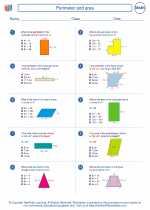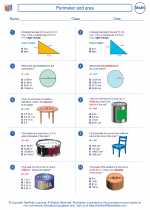Prism
A prism is a three-dimensional shape with two identical parallel bases and rectangular faces. The bases can be any polygon, but the most common type of prism is a right prism, where the bases are rectangles and the lateral faces are all rectangles.
Types of Prisms
There are different types of prisms based on the shape of their bases. Here are a few common ones:
- Rectangular Prism: Bases are rectangles and all lateral faces are rectangles.
- Triangular Prism: Bases are triangles and all lateral faces are parallelograms.
- Pentagonal Prism: Bases are pentagons and all lateral faces are rectangles.
Properties of Prisms
Here are some important properties of prisms:
- Volume: The volume of a prism is given by the formula: V = Bh, where B is the area of the base and h is the height of the prism.
- Surface Area: The surface area of a prism is the sum of the areas of its bases and its lateral faces.
- Diagonal Length: The diagonal length of a prism can be found using the Pythagorean theorem.
Example Problems
Let's solve some example problems to understand prisms better:
Problem 1:
Find the volume of a rectangular prism with a base area of 20 square units and a height of 10 units.
Volume = 20 * 10 = 200 cubic units
Problem 2:
Calculate the surface area of a triangular prism with base edges of 5 units each, base height of 6 units, and lateral edge length of 8 units.
Surface Area = 2 * base area + perimeter of base * lateral edge length
Surface Area = 2*(1/2 * 5 * 6) + (5 + 5 + 5) * 8 = 60 square units
Conclusion
Prisms are important geometric shapes with various properties and applications in mathematics and real-life situations. Understanding the volume, surface area, and other properties of prisms is essential for solving problems involving these shapes.
.◂Math Worksheets and Study Guides Eighth Grade. Perimeter and area

 Worksheet/Answer key
Worksheet/Answer key
 Worksheet/Answer key
Worksheet/Answer key
 Worksheet/Answer key
Worksheet/Answer key
 Worksheet/Answer key
Worksheet/Answer key
